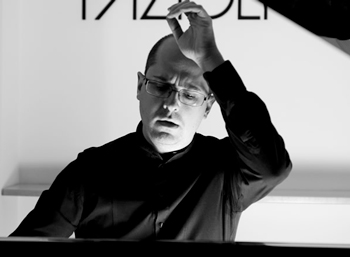by Daniel Hathaway

A hearty dose of Liszt occupied the first half: four movements from Harmonies poétiques et religieuses ranged from the gentle “Awaking Child’s Hymn” to the almost comically bombastic “Funérailles,” with the brutal “Invocation” and highly decorated “Hymn of Love” in between. Plano’s playing was fluent and commanding.
Moving south of the Equator after intermission, Plano turned to music by Piazzolla, Villa-Lobos, and Ginastera. Villa-Lobos’ flashy “Impressões seresteiras” from Ciclo brasileiro led on to Ginastera’s bittersweet Milonga, Op. 2, and his five-movement Suite de danzas criollas. By turns gentle and playful, dissonant and rhythmic, ruminating and calm, the suite of traditional Argentine dances gave Plano the opportunity to change up his playing style, ending with an exciting scherzando.
Plano’s performance of the Gershwin Rhapsody left conflicting impressions. He tore through the piece, pacing it oddly and passing over some of its impish moments. He sometimes overplayed, making the Steinway’s hammers ring, and in the recapitulation tended to make added filigree more prominent than the music it was decorating. Some of Gershwin’s own details got buried.

Striking in his dreadlocks and untucked shirt, Pratt began his recital with Brahms’ rarely performed Ballades, Op. 10. There are four of them, the first based on a Scottish ballad, Edward, but because they’re sectionalized and are arranged in minor/major key pairs, it was difficult to tell exactly where you were. The pieces vacillate between drama, sweetness, and restlessness, and Pratt brought out their inner characters vividly.
Pratt followed the Brahms with an insightful performance of Beethoven’s decidedly odd Sonata in D, Op. 10, No. 3, beginning with a blaze of octaves. He moved the brooding Largo right along, put across the charm of the Menuetto, and made good sense out of the composer’s curious question and answer gestures in the finale, which was festooned with brilliant runs. More pianists should take this piece on: there are a lot of quirks to iron out, and Pratt was on top of them.
The pianist fiddled with his printed program after intermission, substituting two Busoni arrangements of Bach Chorale Preludes for the announced Rachmaninoff pieces. Wachet auf received just a bit of a swing in its countermelody, and Pratt brought out the tenor-voice chorale tune clearly — a bit of a feat on the piano. Nun komm, der Heiden Heiland was elegant in its sinuous coloratura line and beautifully paced.
Two works that share similar formats closed the program. Lera Auerbach’s Chorale, fugue and postlude, a dark, dissonant, ferocious piece, was followed by César Franck’s Prelude, chorale, and fugue, a virtuosic, cyclic work with some dissonance of its own variety. Pratt played both of them with passion and flair, keeping the dissimilar lines of each fugue clear and easy to follow.
Published on ClevelandClassical.com November 28, 2017.
Click here for a printable copy of this article



